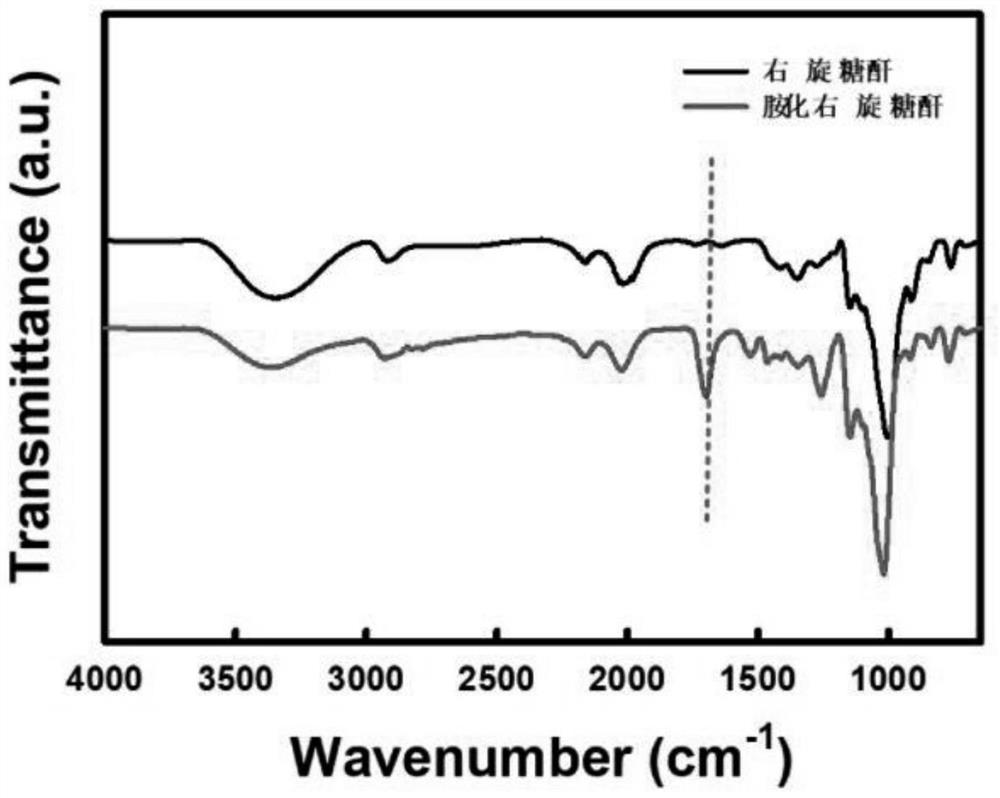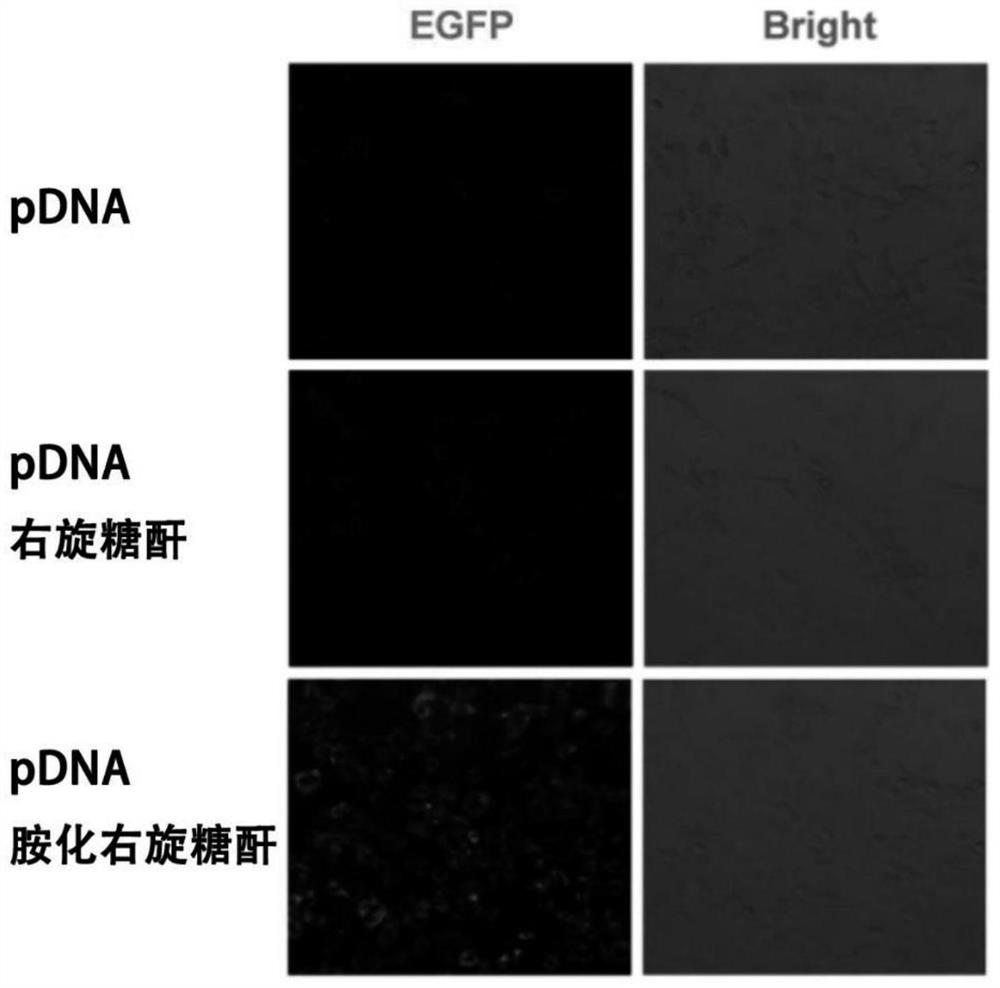A kind of non-viral nanoparticle for gene molecular delivery and its preparation method and application
A nanoparticle, non-viral technology, applied in gene therapy, nanotechnology, nanotechnology, etc., can solve problems such as limited application and low gene transfection efficiency, and achieve high-efficiency transfection, good biological safety, and mild reaction conditions Effect
- Summary
- Abstract
- Description
- Claims
- Application Information
AI Technical Summary
Problems solved by technology
Method used
Image
Examples
Embodiment 1
[0032] Follow the steps below to prepare non-viral nanoparticles for gene molecular delivery:
[0033] At room temperature, add 1 g of dextran into 40 mL of dimethyl sulfoxide, stir until completely dissolved to obtain a dextran solution, add 2 g of 1,1'-carbonyldiimidazole into the dextran solution and stir for 12 hours, then add 4 mL of bis-(3-di Methylpropylamino) amine, stirring and reacting for 24 hours to obtain a reaction solution, centrifuging the reaction solution to obtain a precipitate, repeatedly washing the precipitate with deionized water to remove unreacted dextran to obtain non-viral nanoparticles for gene molecule delivery.
[0034] The application of the non-viral nanoparticles prepared by the above steps in the delivery of gene molecules comprises the following steps:
[0035] In a sterile environment, add 0.1 g of non-viral nanoparticles into 10 mL of PBS, stir until completely dispersed to obtain a non-viral nano-particle solution, add 2 μg of the target g...
Embodiment 2
[0037] Follow the steps below to prepare non-viral nanoparticles for gene molecular delivery:
[0038] At room temperature, add 1 g of dextran into 40 mL of dimethyl sulfoxide, stir until completely dissolved to obtain a dextran solution, add 2 g of 1,1'-carbonyldiimidazole into the dextran solution and stir for 24 hours, then add 6 mL of bis-(3-di Methylpropylamino) amine, stirring and reacting for 24 hours to obtain a reaction solution, centrifuging the reaction solution to obtain a precipitate, repeatedly washing the precipitate with deionized water to remove unreacted dextran to obtain non-viral nanoparticles for gene molecule delivery.
[0039] The application of the non-viral nanoparticles prepared by the above steps in the delivery of gene molecules comprises the following steps:
[0040]In a sterile environment, add 0.1 g of non-viral nanoparticles into 10 mL of PBS, stir until completely dispersed to obtain a non-viral nano-particle solution, add 4 μg of the target ge...
Embodiment 3
[0042] Follow the steps below to prepare non-viral nanoparticles for gene molecular delivery:
[0043] At room temperature, add 1 g of dextran into 40 mL of dimethyl sulfoxide, stir until completely dissolved to obtain a dextran solution, add 2 g of 1,1'-carbonyldiimidazole into the dextran solution and stir for activation for 24 hours, then add 8 mL of bis-(3-di Methylpropylamino) amine, stirring and reacting for 24 hours to obtain a reaction solution, centrifuging the reaction solution to obtain a precipitate, repeatedly washing the precipitate with deionized water to remove unreacted dextran to obtain non-viral nanoparticles for gene molecule delivery.
[0044] The application of the non-viral nanoparticles prepared by the above steps in the delivery of gene molecules comprises the following steps:
[0045] In a sterile environment, add 0.1 g of non-viral nanoparticles into 10 mL of PBS, stir until completely dispersed to obtain a non-viral nano-particle solution, add 6 μg ...
PUM
 Login to View More
Login to View More Abstract
Description
Claims
Application Information
 Login to View More
Login to View More - R&D
- Intellectual Property
- Life Sciences
- Materials
- Tech Scout
- Unparalleled Data Quality
- Higher Quality Content
- 60% Fewer Hallucinations
Browse by: Latest US Patents, China's latest patents, Technical Efficacy Thesaurus, Application Domain, Technology Topic, Popular Technical Reports.
© 2025 PatSnap. All rights reserved.Legal|Privacy policy|Modern Slavery Act Transparency Statement|Sitemap|About US| Contact US: help@patsnap.com



